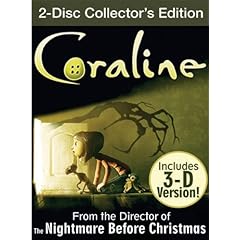 Neil Gaiman is a writer of fairy tales. Sure, some of those fairy tales involve characters who pay other characters to do bad things, but at the heart of every Grimm tale or Aesop fable is a dark room you’ve been told not to enter. Gaiman is acutely aware of the dimensions of that room and knows how to describe it, be it in his award winning work on The Sandman
Neil Gaiman is a writer of fairy tales. Sure, some of those fairy tales involve characters who pay other characters to do bad things, but at the heart of every Grimm tale or Aesop fable is a dark room you’ve been told not to enter. Gaiman is acutely aware of the dimensions of that room and knows how to describe it, be it in his award winning work on The Sandman![]() comic series, or his novels Stardust
comic series, or his novels Stardust![]() or American Gods
or American Gods![]() . The problem is that the Hollywood types that subsequently make movies of his stories don’t know that room and, truth be known, don’t want to know that room. You can’t have the wolf eat Grandma without Red Riding Hood performing a magical resurrection; you just can’t.
. The problem is that the Hollywood types that subsequently make movies of his stories don’t know that room and, truth be known, don’t want to know that room. You can’t have the wolf eat Grandma without Red Riding Hood performing a magical resurrection; you just can’t.
And so, Gaiman’s particular vision has never really been realized until Henry Selick’s Coraline. The title character seeks escape from her new home — and from her parents, who never give her the constant attention she craves. Stumbling across a portal, she is whisked away to a fantastic alternate world where everything is served up for her happiness. Where her own mom and dad are stressed and inattentive, the Other Mother and Other Father dote and sing and cook fantastic meals and never have a problem with little Coraline, except in the way she won’t conform to them by sewing those black button eyes onto her face.
Selick, the director of the classic The Nightmare Before Christmas![]() and the far-less-than-classic Monkeybone
and the far-less-than-classic Monkeybone![]() , pushes the all-important PG rating to the edge; his stop-motion animation dazzles and alternately creeps you out. When the Other Mother, as voiced by Teri Hatcher, reveals her true evil side, she shrinks into a skeletal, German Expressionist figure, all bones and razor blade angles. There are other shocks to be had, but I’ll save them for the viewer. Suffice it to say that the production team could have gone very, very soft (and there are moments from the book that are lost in the film because they surely would have taken it to PG-13) but the grit of Gaiman’s story remains consistent.
, pushes the all-important PG rating to the edge; his stop-motion animation dazzles and alternately creeps you out. When the Other Mother, as voiced by Teri Hatcher, reveals her true evil side, she shrinks into a skeletal, German Expressionist figure, all bones and razor blade angles. There are other shocks to be had, but I’ll save them for the viewer. Suffice it to say that the production team could have gone very, very soft (and there are moments from the book that are lost in the film because they surely would have taken it to PG-13) but the grit of Gaiman’s story remains consistent.
The double-disc version of the release has its own good and bad side. The good is a super looking transfer for the film, as well as a Henry Selick commentary track. The second disc with the behind-the-scenes material is worth the extra money from the single-disc edition. You get to go into Selick’s studio and see how the staff of animators, puppet fabricators and artists make real magic from the supposedly dead medium of stop-motion animation. The bad side is the much-hyped inclusion of the 3-D version of the film along with four sets of glasses with which to view it. It’s the old red and blue lens gig again and, for the sake of non-biased reporting, I tried to sit through the movie in that state. Forget it. Not only do the headaches come on almost immediately, but the film’s color palette disappears in a wash of red and blue, ruining the eye-popping visuals with a false (and seldom acceptable) sense of three dimensionality.
While probably not for overly sensitive little children, Coraline is a very good, often scary film that most of the family will enjoy. It’s a fairy tale, all right, but the best of them always have a few black teeth in that perfect smile – a realization the creators of the story did not forget.
Coraline (Two-Disc Collector’s Edition w/ 3D)![]() is available through Amazon.com.
is available through Amazon.com.

![Reblog this post [with Zemanta]](http://img.zemanta.com/reblog_e.png?x-id=58180939-ca16-45aa-a156-92b657e3044b)



Comments